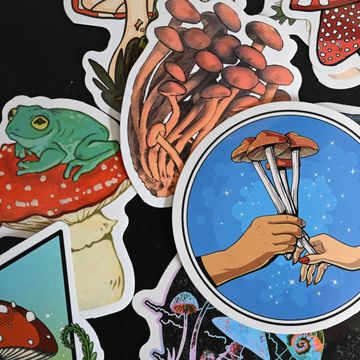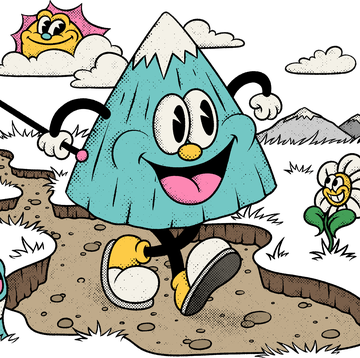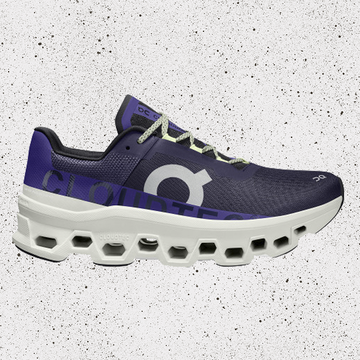Dr. Justin Schmidt, an entomologist and research director of the Southwest Biological Institute, knows pain. In fact, he invented the Schmidt Sting Pain Index, which categorizes the level of pain felt when stung by hymenoptera, an order of insects that includes wasps, bees, and ants. The good doctor took some time out of his busy day wrangling animals to talk about his first encounter with the bullet ant and the tarantula hawk wasp — the only two animals to reach SSPI's highest level, and members of our 25 Toughest Animals list—and just how it felt to feel their wrath.
Books are filled with tales of the ants being used as part of puberty rites deep in the Amazon rainforest, but all of it was anecdotal from the early 20th century. I knew that the literature abounded with horror stories about what the bullet ant did, but I had never seen one. So you can imagine the excitement I had when the ants were finally right there in front of me during a trip to Brazil some time ago.
I had a big jar in my collecting bag and I was trying to pick them up with 12-inch long forceps, a great big monster tool, but the ants were sticky, which surprised me, because big ants are usually clumsy and don't climb very well. Bullet ants are agile in spite of being huge–up to an inch–and their feet can stick to just about anything. They were getting riled up by all the movement and were working their way up the forceps to where I was. They seemed to know that the forceps were not the real target, that whatever was at the top was the goal. I was multi-tasking, looking around on the ground to make sure I wasn't getting outflanked by any ants. Sooner or later, I goofed. One of them got up the foreceps and stung me on my finger.
That really shuts you down. It really felt like a bullet. It was instantaneous, almost even before it stung me. It was absolutely riveting. There were huge waves and crescendos of burning pain—a tsunami of pain coming out of my finger. The tsunami would crash as they do on the beach, then recede a little bit, then crash again. It wasn't just two or three of these waves. It continued for around 12 hours. Crash. Recede. Crash. It was absolutely excruciating. There wasn't much I could do except be aware of it and groan. But I didn't lose the ant. I was dedicated enough that I got it into the jar.
The pain radiated out from the finger. I'd hold my arm out and the one that got stung was shaking and trembling. No matter what I tried to do to stop the shaking, it didn't work. That told me that the sting and the pain did have a systemic effect, although it's localized. It doesn't affect your heart or lungs. The indigenous people get stung a dozen or more times during the puberty rites, and none of them suffer longterm effects. It's a local pain reaction.
We're all into folk remedies, so I thought that maybe ice would help. After it had been going on for an hour or so, we went to a restaurant. I was getting ice from the drinks and putting it on my finger. It sort of worked. As long as I was holding the ice on my finger, the pain stopped. I think it was because if you put ice on a nerve, the nerve can't fire anymore. But it didn't solve the problem. As soon as I took the ice off, the waves of pain returned. The other folk remedy–a miner's folk remedy – is when in doubt, have some booze. We were having some beers. They have wonderful beer in Brazil. That helped the palate, but it didn't do anything for the pain.
The bullet ant and the tarantula hawk wasp [the only other bug to reach a 4 on the pain scale] are like day and night. You can't draw much of a comparison, other than they both really, really hurt. The ant is a social animal that lives in colonies of 1,000 to 3,000 individuals. They have a colony to defend. The sting has to do longterm damage to get your attention. The tarantula hawk is a solitary wasp. It's a nomad that wanders around looking for tarantulas. In the process, it runs into big fierce things like birds or lizards that are trying to eat it. The goal of the tarantula hawk's sting is to get the predator to release it. All it wants to do is get out of the animal's grasp. In order to do that, it needs to deliver instantaneous pain.
The pain from the sting of the tarantula hawk is like you were walking underneath a high-voltage electric line in a wind storm, a wind gust snapped the line, and it fell on your arm. You get 20,000 volts all at once cascading through your body. It's pure electrifying pain. Instantaneous. Very clean and sharp. The good news is that it only lasts about three minutes. You don't get the waves of pain that you do with the bullet ant. It's just one super intense blast. The biology explains why that is. There's no need to hurt that long. The idea is to get jaws to open so the wasp can escape.
The pain decreases within the two or three minutes, but it's so painful that you don't notice it doing so. That's not on your radar screen. It's more that all of a sudden when you're done screaming in pain and you're completely exhausted, you look at your watch and you realize it's only been a few minutes. It's amazing that it's gone.
Want to see what bullet ant pain looks like? Watch below as Hamish Blake, of the Australian comedy duo Hamish & Andy, tries on some "bullet ant gloves" for the sake of our entertainment.
* This article is part of The Code, an editorial partnership between Esquire and Ford F-150.
From US Esquire














